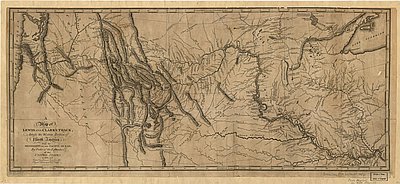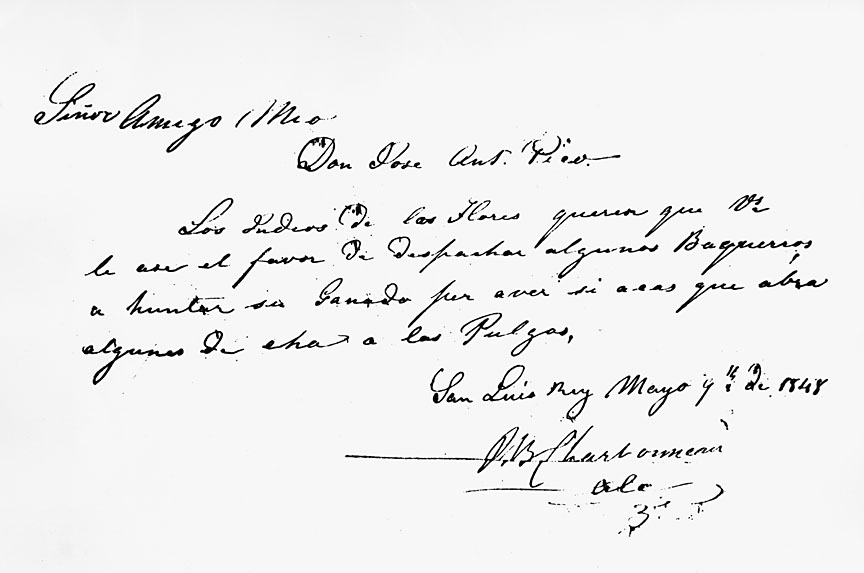- Catalog No. —
- OrHi 103121
- Date —
- May 9, 1848
- Era —
- 1846-1880 (Treaties, Civil War, and Immigration)
- Themes —
- Environment and Natural Resources, Exploration and Explorers, Native Americans
- Credits —
- Oregon Historical Society
- Regions —
- Oregon Country
- Author —
- Jean Baptiste Charbonneau
From Jean Baptiste Charbonneau
As the youngest member of the Lewis and Clark Expedition, Jean Baptiste Charbonneau holds a special place in the history of the American West. Charbonneau was born at Fort Mandan in present-day North Dakota on February 11, 1805, the son of French-Canadian fur trader Toussaint Charbonneau and his Shoshone slave-wife, Sacagawea. The infant accompanied the Corps of Discovery to the Pacific Ocean and back, an arduous journey of 5,000 miles.
During those eighteen months, William Clark became especially fond of the boy, who he called “Pomp,” and offered to raise him as his own son after the end of the Expedition. From what little evidence remains, it does not appear that Clark actually raised Charbonneau as one of his own children, but he did pay for the child’s board, lodging, and education in St. Louis from around 1809 to about 1820.
Charbonneau would go on to live a full and colorful life after leaving Clark’s charge in the early 1820s. As a young man he spent several years in Germany in the service of Prince Paul of Württemberg. He returned to the Missouri River country in the late 1820s, working as a trapper and guide. From 1846 to 1847 he guided the Mormon Battalion from New Mexico to California. He stayed in California for close to two decades, serving a stint as a mission magistrate, prospecting for gold, and, eventually, settling down in Placer County.
Charbonneau was on his way to the gold fields of Montana in May 1866 when he fell ill and died near eastern Oregon’s Owyhee River. His gravesite, located in the Jordan Valley, is one of Oregon’s few direct material connections with the Corps of Discovery.
The document reproduced here, the original of which is at the Santa Barbara Mission Archives, is one of only two written sources originating from Charbonneau’s hand known to have survived. In this 1848 letter—which may be a clerk’s copy of the original—Charbonneau, acting as magistrate of San Luis Rey Mission near San Diego, relays to his superior a request by the Indians for some men to help round up livestock.
Written by Dane Bevan, © Oregon Historical Society, 2004.
Related Historical Records
-
A Conversation on the History and Commemoration of the Lewis and Clark Expedition
On June 14, 2004, historians William L. Lang and Carl Abbott joined Roberta Conner (Umatilla, Cayuse, Nez Perce), director of the Tasmástlikt Cultural Institute and vice president of …

-
Clark, Pomp, York, and Sacagawea
Unlike Lewis, Clark lived into his sixties and played an important role in the development of the Louisiana Territory, including investment in one of the first fur companies …

-
Map of Lewis and Clark's Track
This map, titled A Map of Lewis and Clark's Track across the Western Portion of North America from the Mississippi to the Pacific Ocean, published in 1814, is …

